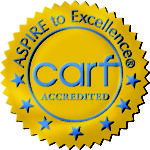THE PROGRAM
Learn more about our program here
THE RESIDENTS
Learn more about our residents here
THE GOALS
Learn more about the goals here
Residents are encouraged to participate in individual therapy with the facility clinician, daily therapeutic activities and group. Peer relationships are fostered. Individual therapy aimed at developing coping skills/peer relations/anger management/etc. and reinforced by earning an incentive that the resident and therapist have agreed upon. Behavior modification programs may also be developed by the facility clinician and clinical director to assist residents in shaping behavior as well, insuring progress.
Each week, the facility goals for the residents are reviewed and updated as needed. Goals group is conducted Monday-Thursday to encourage and support residents in meeting their treatment goals. Residents earn points for meeting their daily behavior goals and meeting other daily duties. As residents demonstrate increased responsible behavior and earn points accordingly, they can move up on their level and earn privileges based on their level. Residents attend weekly Equine therapy, self care groups and school with educational enhancement assistance. Numerous weekend activities are scheduled for example – art, community support groups, bowling, amusement parks, movies, independent living skills. All designed to maximize the potential of each foster youth.
Resources
Placement:
(951) 653-7561
Child Abuse Hotline:
(800) 827-8724
Suicide Hotline:
(800) 243-8255
Poison Hotline:
(800) 222-1222
Mental/Behavioral Health
Hotline:
(888) 743-1478 ext. 211
Ombudsman:
(877) 846-1602
Substance Abuse Screening
Assessment & Referral Center:
(909) 421-4601
California Youth Crisis Line:
(909) 843-5200
Transitional Ade Youth:
(909) 357-7194
Choices Clinic Medical & Counseling:
(909) 888-3100
Family Resource Center:
(909) 875-5288
Kids Come First Community Clinic:
(909) 673-9125






Plan-It Life, Inc. is a non-profit 501(c)(3) residential treatment center for at-risk youth, ages 12 -18. Plan-It Life, Inc. was founded in 2001 by CEO/ Administrator Shelia C. Marshall -McLean, LMFT, a Clinical Psychotherapist with a passion for fostering growth and self-awareness in youth. Mrs. McLean envisioned a safe haven where abused and/or neglected teens could come to learn social skills, decision-making skills, improve their education, receive anger management and therapy, as well as assistance in transitioning into the next phase of their lives.

